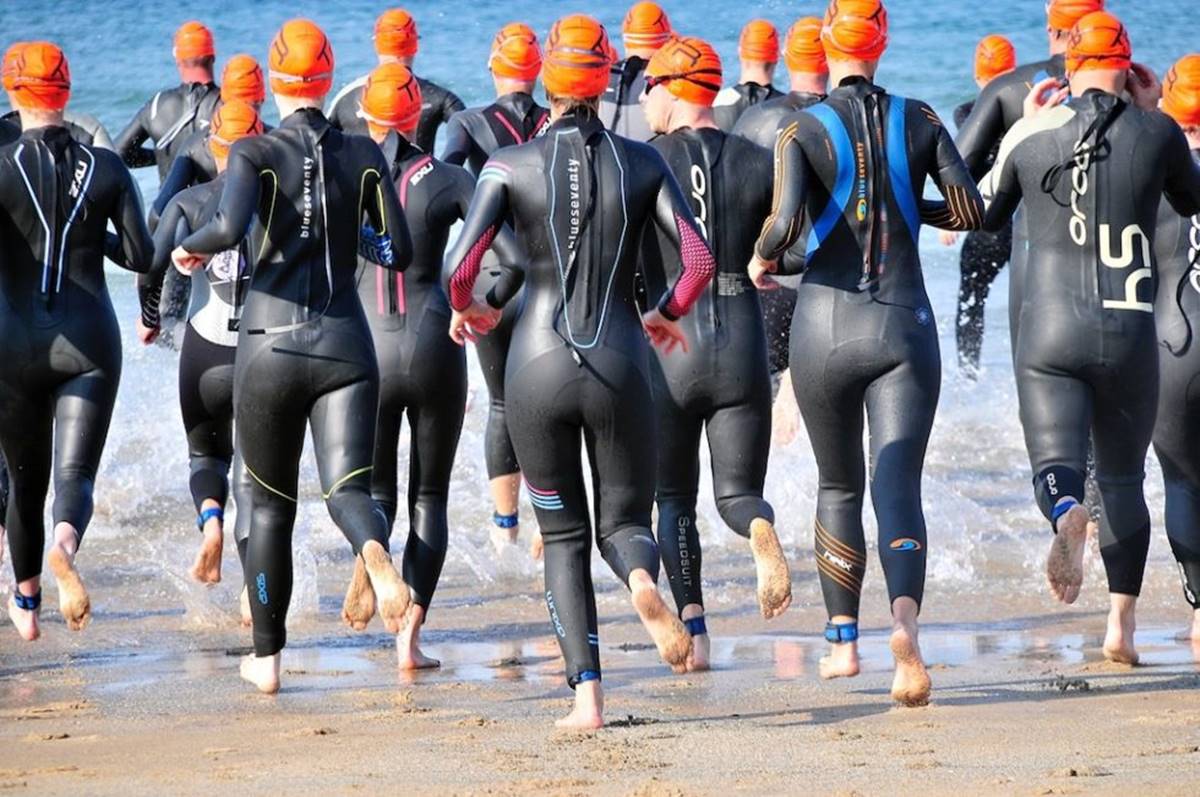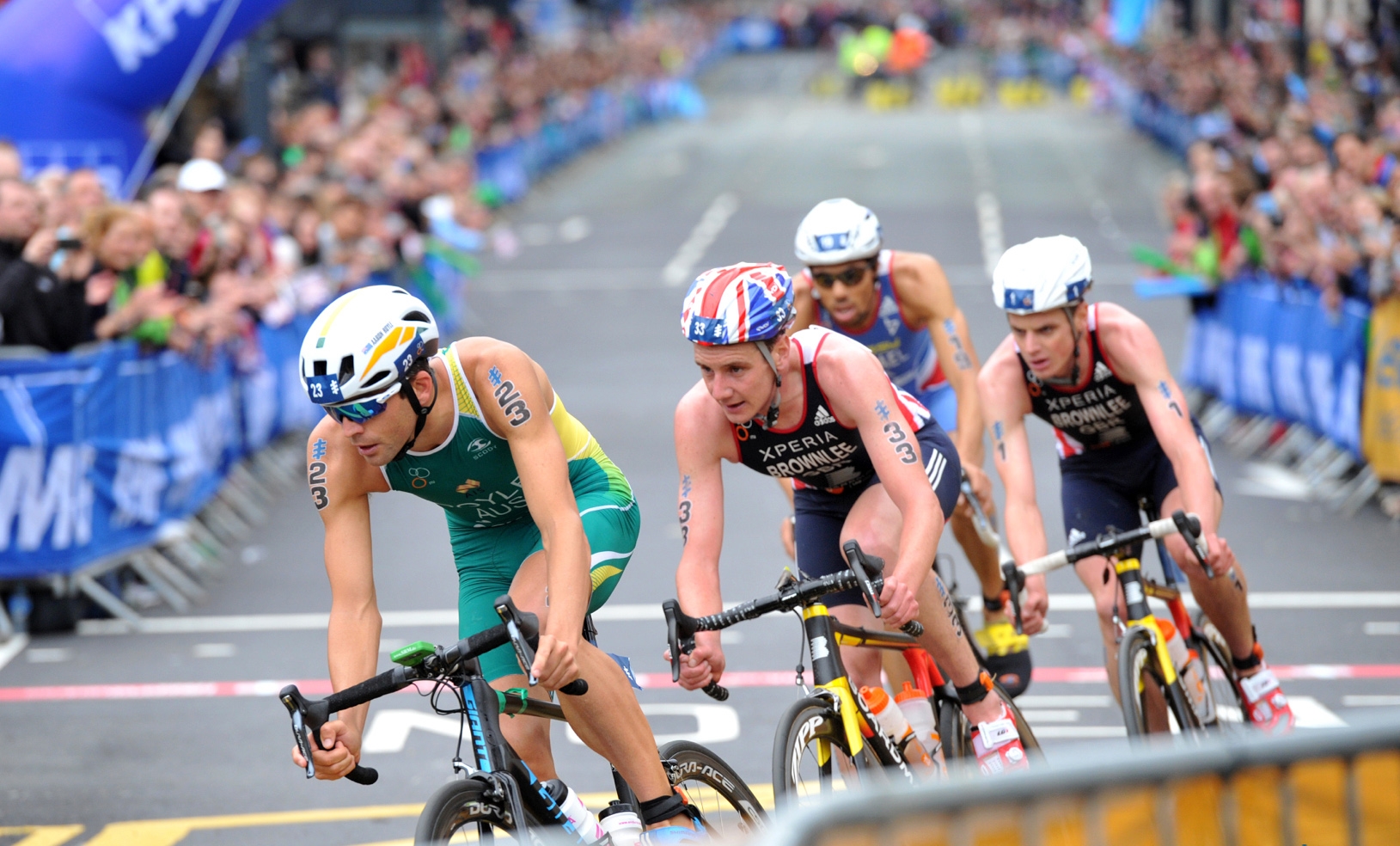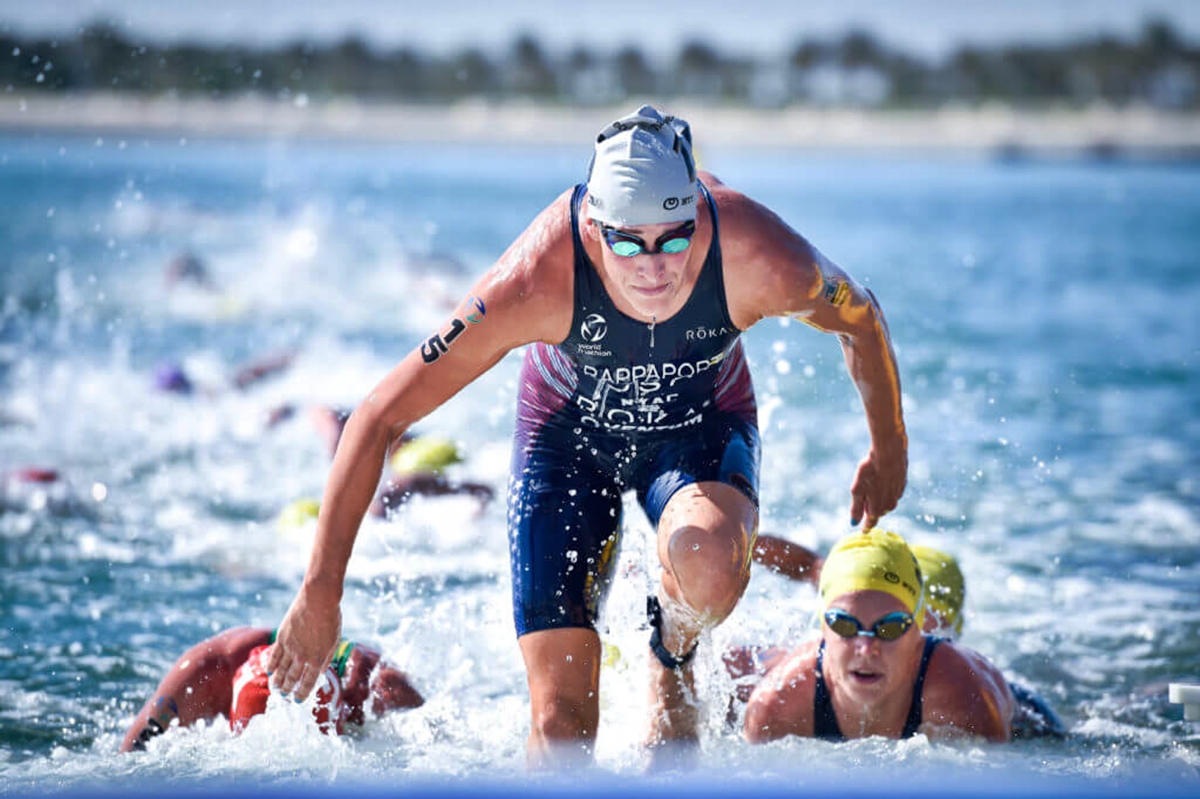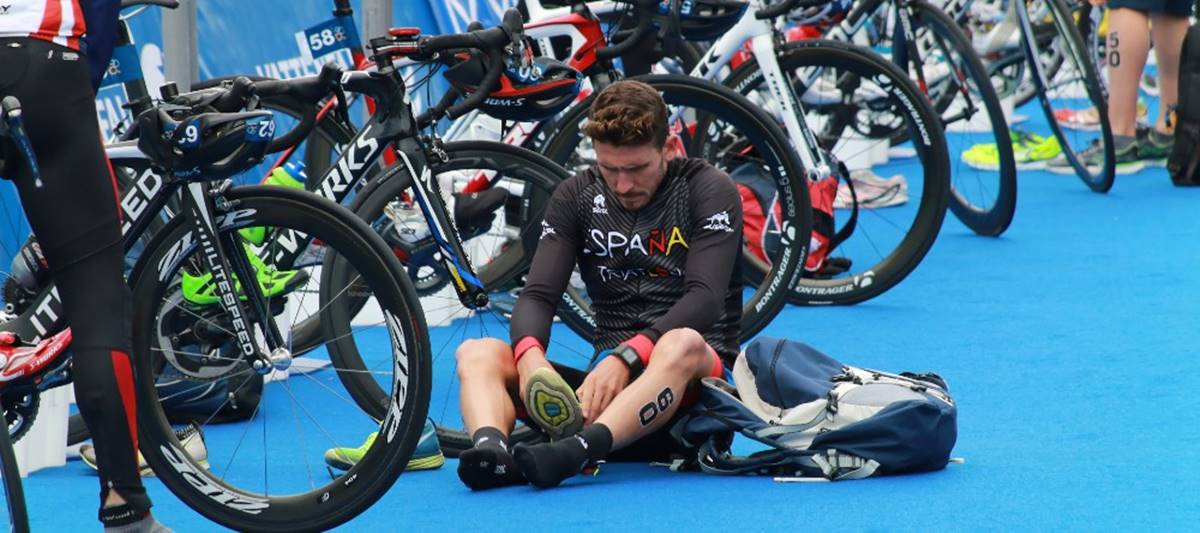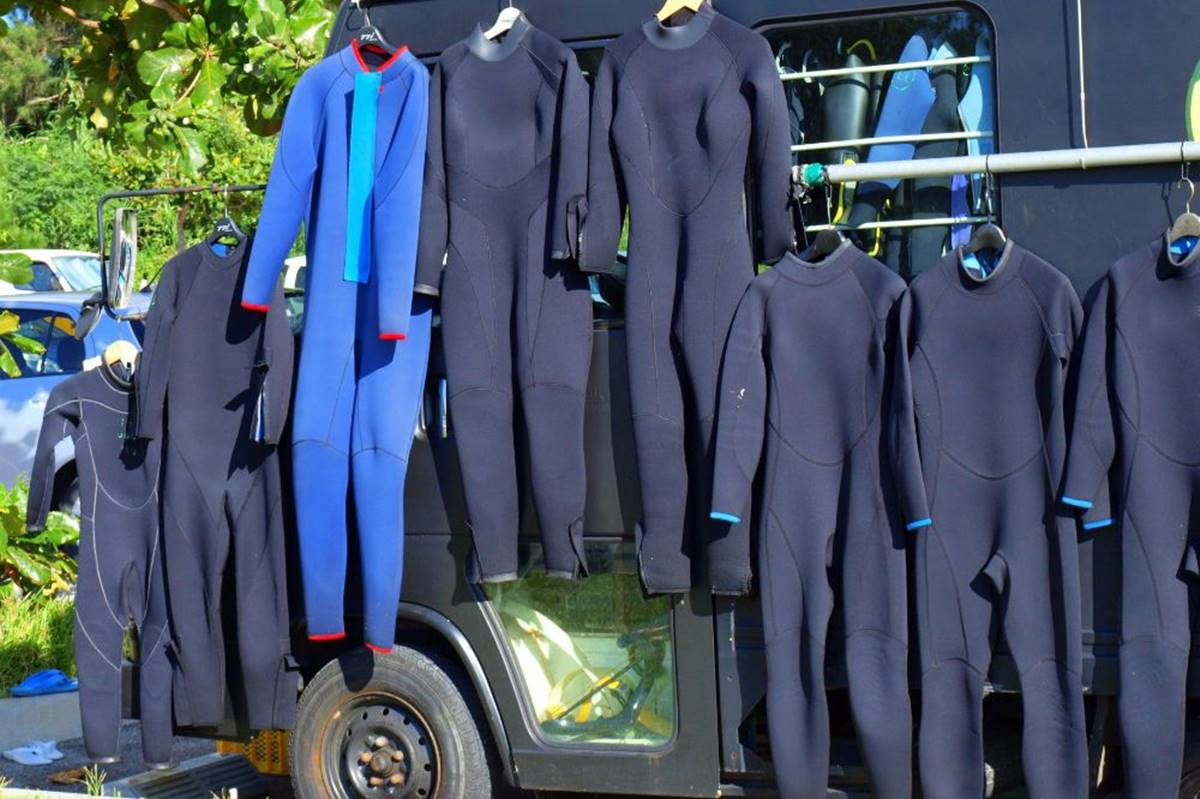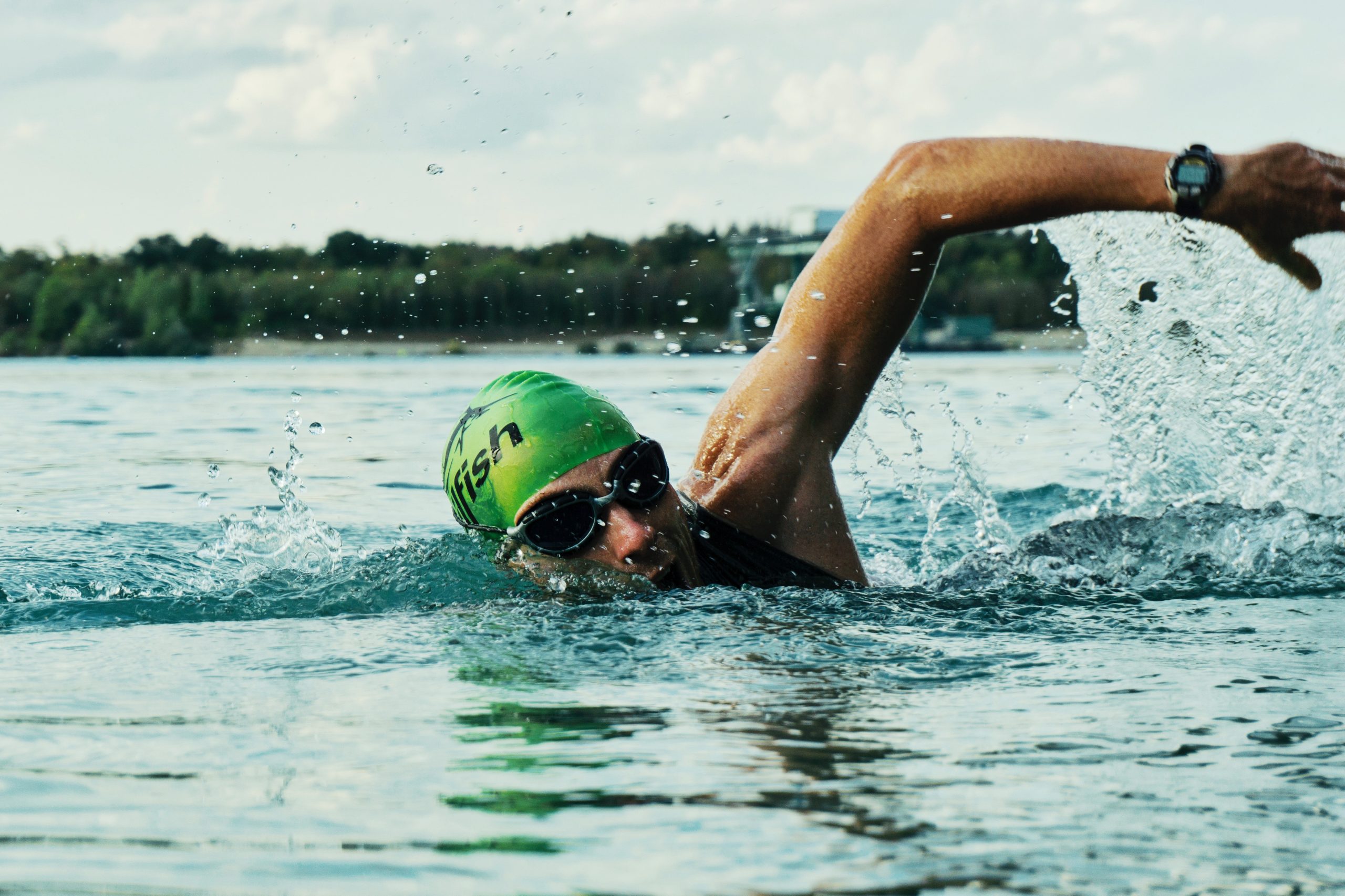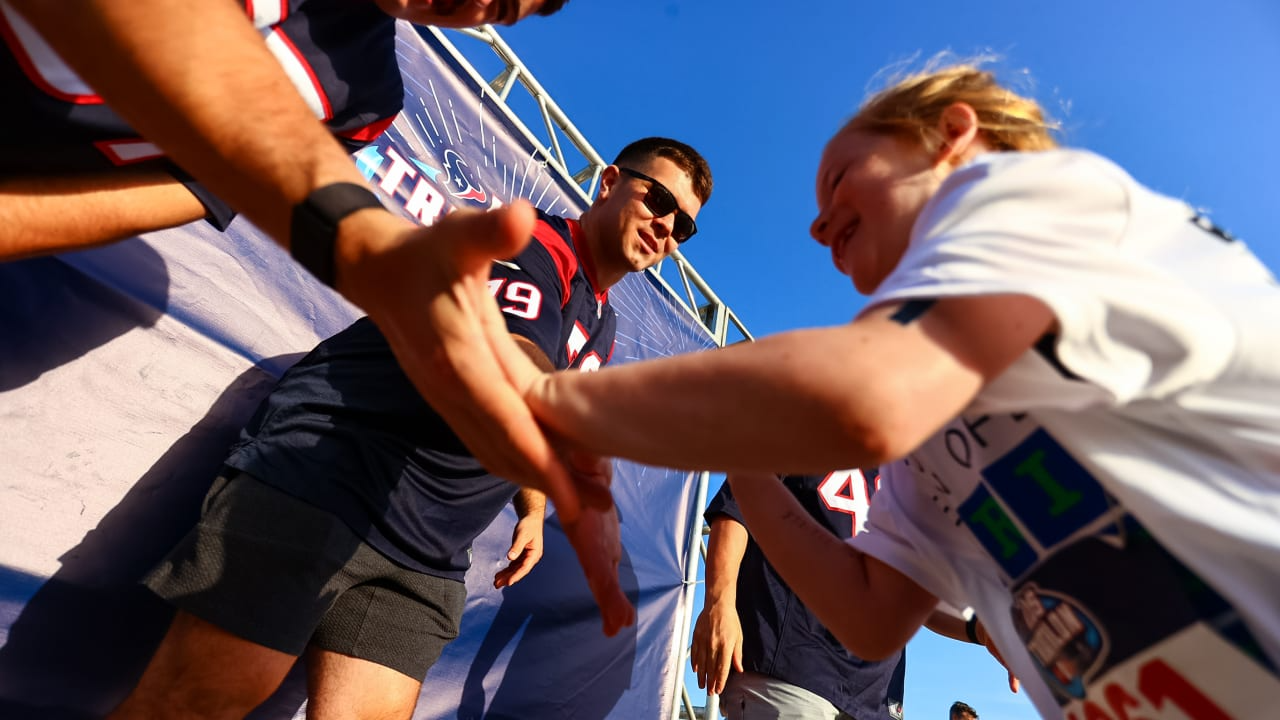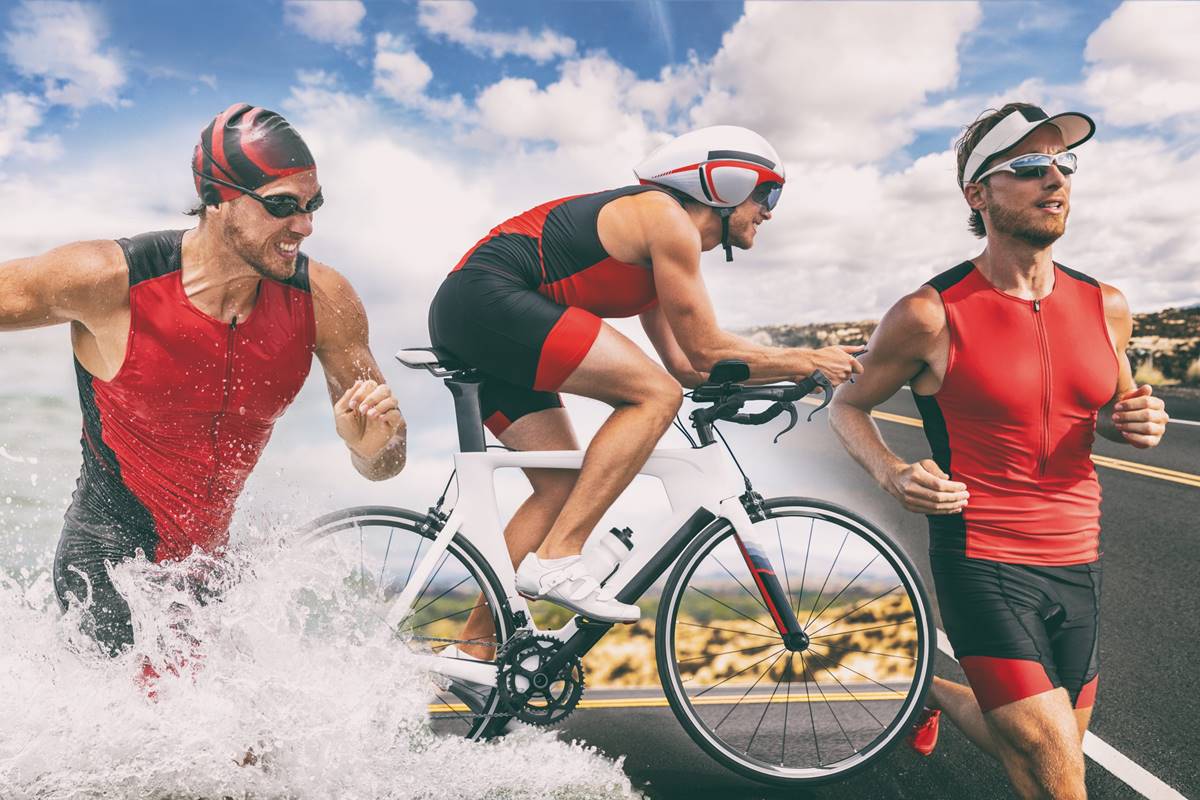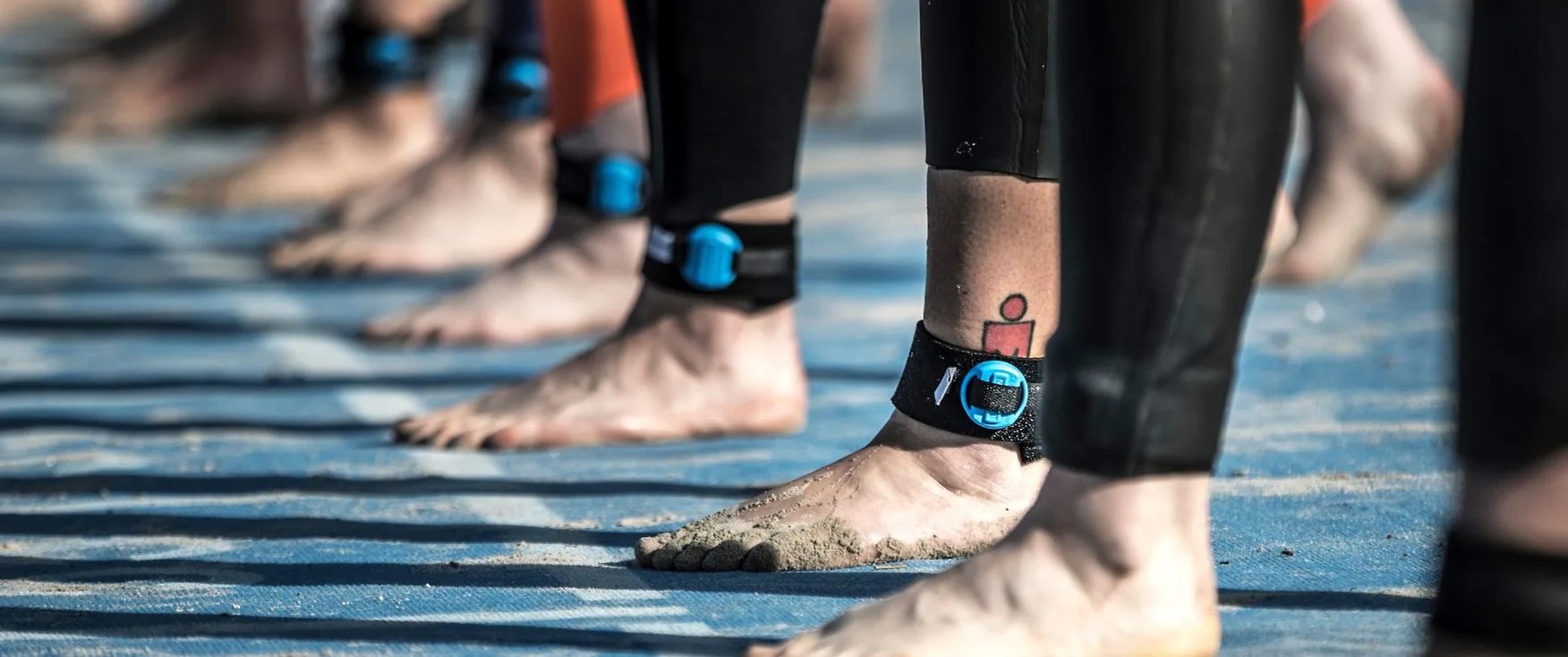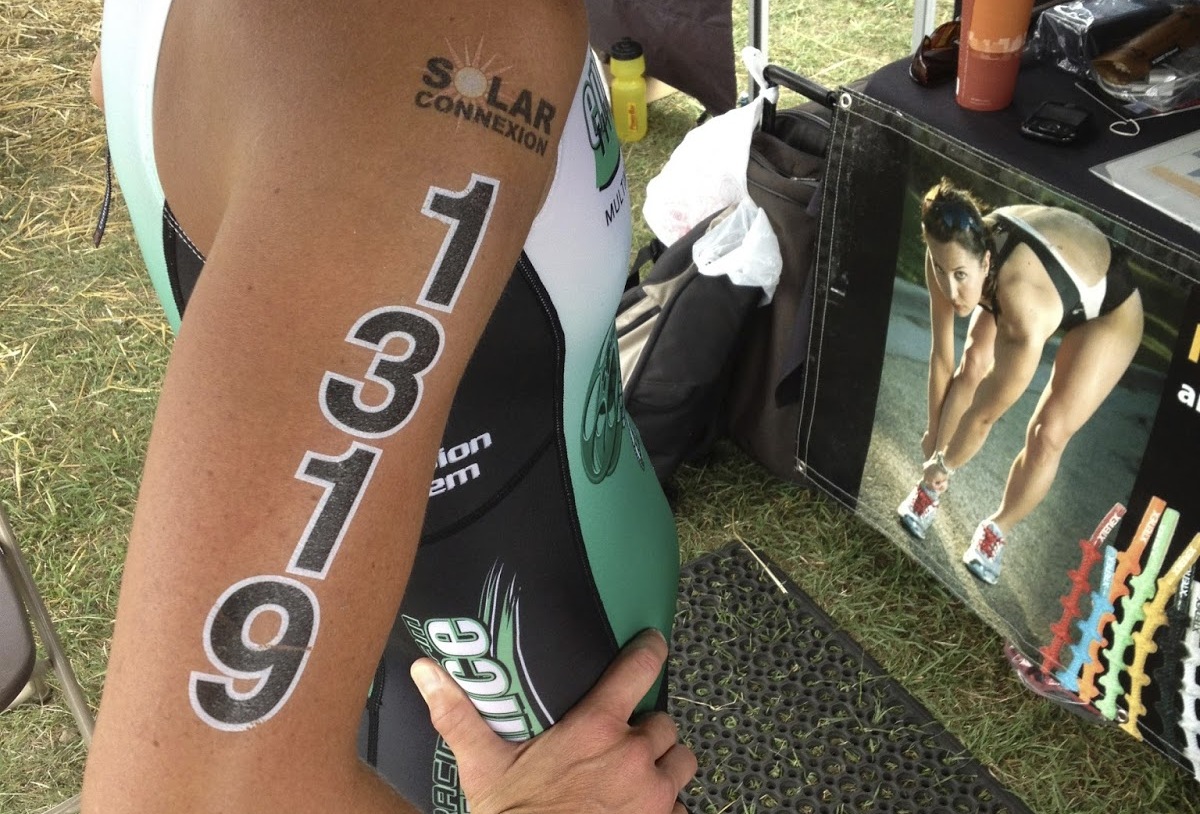

Featured
How To Remove Triathlon Tattoos
Published: August 12, 2023
Learn how to easily remove your triathlon tattoos with our featured guide, packed with effective methods and tips. Say goodbye to unwanted race markings!
Introduction
Triathlon tattoos are a badge of honor for athletes who have completed the grueling race. However, there may come a time when you want to remove these tattoos for various reasons. Whether it’s to make a professional impression in the workplace or because you no longer identify as a triathlete, there are several methods available for tattoo removal.
Triathlon tattoos are often unique and symbolic, representing personal achievements and dedication to the sport. While they hold sentimental value for many athletes, there are instances when they may need to be removed. This can be due to career requirements, changes in personal preferences, or simply wanting a fresh canvas to adorn your skin.
The process of removing a triathlon tattoo involves breaking down the ink particles that have been permanently embedded in the skin. Various techniques are used to achieve this, ranging from non-invasive methods such as chemical peels and laser tattoo removal to more invasive procedures like surgical excision.
It’s important to note that removing a triathlon tattoo is a personal decision, and there are factors to consider before embarking on the process. Understanding the different methods available, their effectiveness, and potential risks can help you make an informed choice that aligns with your goals.
In this article, we will explore the various methods for removing triathlon tattoos, including chemical peels, laser tattoo removal, surgical excision, and home remedies. We’ll also discuss some precautions and considerations to ensure a safe and successful tattoo removal experience.
So, whether you’re ready to bid farewell to your triathlon tattoo or simply curious about the options available, read on to discover the best way to remove your triathlon tattoo and embrace a new chapter in your life.
Why Remove Triathlon Tattoos
Triathlon tattoos serve as a reminder of the hard work, dedication, and triumphs experienced during the completion of a triathlon. They can hold sentimental value and symbolize personal achievements. However, there are several reasons why individuals may choose to remove their triathlon tattoos.
One common reason is the desire to pursue different career opportunities. In certain professions, visible tattoos may be seen as unprofessional or may conflict with dress code policies. Removing a triathlon tattoo can be a way to present a more polished and conservative image in the workplace.
Another motivation for tattoo removal is the change in personal identity. As time goes by, interests and priorities can shift. What was once a passion for triathlons may no longer hold the same significance. Removing the triathlon tattoo allows individuals to embrace a different phase of their life without the constant reminder of their past athletic pursuits.
Additionally, some people may simply grow tired of the tattoo’s appearance. Over time, tattoos can fade, blur, or become distorted, losing their initial vibrancy. The decision to remove the tattoo may be driven by a desire for a fresh canvas or the desire to make space for a new design that better aligns with their current aesthetic preferences.
In some cases, individuals may have regrets or negative associations tied to their triathlon tattoos. It could be that the tattoo reminds them of a difficult period in their life or holds emotional significance that they wish to let go of. Removing the tattoo can provide a sense of closure and help individuals move forward.
Lastly, there are practical considerations such as allergies or sensitivities to the tattoo ink. Some individuals may experience adverse reactions or complications from the tattoo, making removal a necessary step for maintaining their skin’s health and well-being.
Ultimately, the decision to remove a triathlon tattoo is a personal one, influenced by a range of factors. It’s important to carefully assess your own motivations and make an informed choice that aligns with your current lifestyle, goals, and preferences.
Methods for Removing Triathlon Tattoos
When it comes to removing triathlon tattoos, there are several methods available, each with its own advantages and considerations. The choice of method depends on factors such as tattoo size, ink colors, location on the body, and personal preferences. Let’s explore some common methods for tattoo removal:
Chemical Peels: Chemical peels involve the application of a chemical solution to the skin, which helps exfoliate the top layers and fade the tattoo over time. This method is best suited for smaller, lightly pigmented tattoos. It is a non-invasive option but may require multiple sessions to achieve desirable results.
Laser Tattoo Removal: Laser tattoo removal is one of the most popular and effective methods for removing triathlon tattoos. It involves directing high-intensity laser beams into the skin, which breaks down the tattoo pigments. The body’s natural healing process then gradually eliminates these pigments. Laser tattoo removal can target specific ink colors and is suitable for tattoos of various sizes and locations. Multiple sessions are typically required for complete removal.
Surgical Excision: Surgical excision involves cutting out the tattooed skin and stitching the surrounding skin together. This method is most suitable for smaller tattoos and may leave a scar. It is often recommended for tattoos that are difficult to remove by other means or for individuals who desire immediate results.
Home Remedies: Some individuals opt for home remedies to fade their triathlon tattoos. These include methods such as lemon juice, salt scrubbing, and topical creams. While these remedies may show some results, they are generally less effective than professional treatments and may carry higher risks of skin irritation or damage.
It’s important to note that the effectiveness and safety of these methods can vary from person to person. Factors such as skin type, tattoo size, and ink colors can impact the success of the removal process. Consulting with a dermatologist or a professional tattoo removal specialist is highly recommended to determine the best method for your specific case.
Additionally, regardless of the method chosen, it’s crucial to follow the recommended aftercare instructions provided by the professional or dermatologist. This includes protecting the treated area from sunlight, keeping it clean, and avoiding activities that may irritate the skin.
Each method has its own pros and cons, and the choice will ultimately come down to personal preferences, cost, and desired outcome. Understanding the available options and consulting with professionals can help you make an informed decision for the successful removal of your triathlon tattoo.
Chemical Peels
Chemical peels are a non-invasive method for removing triathlon tattoos. This procedure involves the application of a chemical solution to the skin, which helps exfoliate the top layers and gradually fade the tattoo over time. While chemical peels may not completely remove the tattoo, they can significantly lighten its appearance.
The process of a chemical peel involves a series of sessions, usually spaced several weeks apart. During each session, the chemical solution is applied to the tattooed area. The solution works by causing controlled damage to the outer layers of the skin, prompting the body’s natural healing process to remove the damaged skin cells and stimulate the growth of new, healthier skin.
Chemical peels are most effective for smaller and lightly pigmented tattoos. They may not produce the desired results for larger and more densely inked tattoos. The success of the treatment depends on the depth of the tattoo ink and the individual’s skin type.
It’s important to note that chemical peels can cause some discomfort during the procedure. The sensation is often described as a tingling or stinging feeling, similar to a mild sunburn. Topical numbing creams may be applied to alleviate any discomfort.
Common types of chemical peels used for tattoo removal include alpha hydroxy acids (AHAs) and trichloroacetic acid (TCA). AHAs are milder and work on the superficial layers of the skin, gradually fading the tattoo. TCA peels, on the other hand, penetrate deeper into the skin, making them more effective for medium-sized tattoos.
It’s important to consult with a dermatologist or a professional tattoo removal specialist before undergoing a chemical peel. They will assess your tattoo size, color, and skin type to determine if this method is suitable for you. They can also provide you with guidelines on post-treatment care to ensure proper healing and minimize any potential side effects.
While chemical peels are a popular option for tattoo removal, it’s essential to manage your expectations. Complete removal of a triathlon tattoo through chemical peels alone may not be achievable. However, this method can significantly lighten the tattoo, making it less noticeable or providing a faded base for subsequent treatments if desired.
Chemical peels offer a non-invasive alternative for those seeking to fade their triathlon tattoos without the need for laser treatments or surgical procedures. In order to achieve the best results, it’s important to follow the recommended treatment plan and have realistic expectations about the outcome.
Laser Tattoo Removal
Laser tattoo removal is a highly effective method for removing triathlon tattoos. This procedure utilizes high-intensity laser beams to break down the tattoo ink particles, allowing the body’s natural healing processes to gradually eliminate the pigment from the skin.
During a laser tattoo removal session, the laser device emits specific wavelengths of light that are absorbed by the tattoo ink. As the laser energy is absorbed, it causes the ink pigments to shatter into tiny fragments. Over time, these fragmented pigments are cleared away by the body’s immune system, resulting in fading and eventual removal of the tattoo.
Laser tattoo removal can effectively target various ink colors, including black, as well as other colors such as red, green, and blue. However, certain pigments may be more challenging to remove, requiring multiple sessions and specialized laser equipment.
The number of laser tattoo removal sessions needed depends on various factors, including tattoo size, ink colors, skin type, and ink depth. Smaller tattoos and lighter ink colors are generally easier to remove, while larger and more densely inked tattoos may require more sessions to achieve optimal results.
It’s worth noting that laser tattoo removal can cause some discomfort during the procedure, often described as a sensation similar to a rubber band snapping against the skin. Most clinics offer topical anesthetic creams or cooling devices to minimize any discomfort experienced by the patient.
After each laser treatment, it’s essential to follow the aftercare instructions provided by the practitioner. This may include keeping the treated area clean, applying topical ointments or creams, avoiding excessive sun exposure, and taking precautions to prevent infection.
While laser tattoo removal is highly effective, it’s important to have realistic expectations about the outcome. Complete removal of a triathlon tattoo may not always be possible, especially with older or heavily inked tattoos. However, significant fading and reduction in the appearance of the tattoo can typically be achieved through a series of laser sessions.
It’s recommended to consult with a professional tattoo removal specialist or dermatologist who has experience with laser tattoo removal. They can assess your tattoo and skin type and provide a personalized treatment plan, including the estimated number of sessions required and potential risks or side effects.
Laser tattoo removal offers an efficient and safe option for individuals seeking to remove their triathlon tattoos. With advanced laser technology and proper care, it is possible to achieve satisfying results and restore the skin to a tattoo-free state.
Surgical Excision
Surgical excision is a method for removing triathlon tattoos that involves physically cutting out the tattooed skin and stitching the surrounding skin together. This procedure is typically recommended for smaller tattoos or in cases where other removal methods have been unsuccessful.
The surgical excision process begins with a consultation with a dermatologist or a surgeon who specializes in tattoo removal. After assessing the tattoo’s size, location, and depth, the doctor will determine the appropriate surgical approach.
During the procedure, the area around the tattoo is numbed with a local anesthetic. The tattooed skin is then carefully excised using a scalpel or surgical knife. The edges of the surrounding skin are then brought together and stitched to allow for proper healing.
While surgical excision offers the advantage of immediate removal, it does come with some potential drawbacks. The procedure may leave a visible scar, especially if the tattoo is large or located in a prominent area. The size of the scar can vary depending on factors such as the individual’s skin type, the location of the tattoo, and the surgical technique used.
Post-operative care is crucial for proper healing after surgical excision. The doctor may provide instructions on how to clean and dress the incision site, as well as any medications to help with pain management and prevent infection.
Before opting for surgical excision, it’s important to have a thorough discussion with the medical professional about the possible risks and benefits. While this method can offer immediate removal, it may not be suitable for all individuals, especially those with large or complex tattoos.
Additionally, it’s important to consider the potential cosmetic outcome before proceeding with surgical excision. The resulting scar may be permanent and need to be taken into account when evaluating the aesthetic impact of the procedure.
Surgical excision is often recommended when other methods have not been successful, or when the individual prefers a more immediate removal option. The decision to pursue this method should be made in consultation with a qualified medical professional who can provide guidance based on your unique circumstances.
While surgical excision may leave a scar, it can provide a viable solution for individuals seeking prompt and complete removal of their triathlon tattoos.
Home Remedies
For those looking for more natural or budget-friendly alternatives, there are some home remedies that are believed to help fade triathlon tattoos. It’s important to note that these methods may not be as effective as professional treatments and caution should be exercised when attempting them.
One common home remedy is the application of lemon juice to the tattooed area. Lemon juice contains natural bleaching agents that may help lighten the tattoo over time. It can be squeezed directly onto the tattoo or mixed with salt to create a scrub. However, it’s essential to be cautious as lemon juice can sometimes cause skin irritation or allergic reactions. Patch testing should be done before applying it to the entire tattooed area.
Another popular method is salt scrubbing. This involves creating a mixture of salt and water and gently scrubbing the tattooed area. The abrasive nature of the salt helps exfoliate the top layers of skin, gradually fading the tattoo. However, excessive scrubbing can cause skin irritation, so it’s important to use gentle pressure and moisturize the skin properly afterward.
There are also various topical creams and ointments available for tattoo fading. These creams usually contain ingredients like hydroquinone or glycolic acid, which claim to break down the tattoo pigments and fade the tattoo over time. It’s important to research and choose reputable products, as well as follow the instructions provided by the manufacturer.
While these home remedies may show some results in fading the tattoo, it’s crucial to have realistic expectations. Complete removal of a tattoo using home remedies alone is unlikely, especially for larger or more heavily inked designs. Additionally, these remedies may carry higher risks of skin irritation or damage compared to professional treatments.
Before attempting any home remedies, it’s recommended to consult with a dermatologist or a professional tattoo removal specialist. They can provide guidance on the safety and potential effectiveness of these methods based on your specific tattoo and skin type.
It’s important to approach home remedies with caution and understand that their effectiveness and reliability may vary. If you decide to try any of these methods, it’s always wise to start with a small portion of the tattoo and observe how your skin reacts before proceeding with larger areas.
Ultimately, while home remedies can offer a more accessible option for tattoo fading, professional tattoo removal methods such as laser treatments or surgical excision are generally considered more reliable and effective for achieving significant results.
Precautions and Considerations
When considering the removal of triathlon tattoos, it’s essential to keep certain precautions and considerations in mind. Understanding these factors will help ensure a safe and successful tattoo removal experience.
Consultation with Professionals: Before embarking on any tattoo removal method, it is advisable to seek consultation with a dermatologist or a professional tattoo removal specialist. They can assess your specific tattoo, skin type, and medical history to provide personalized recommendations and guide you towards the most suitable removal method.
Patient Expectations: It’s important to have realistic expectations regarding the outcome of tattoo removal. While significant fading can be achieved, complete removal may not always be possible, particularly for older or densely inked tattoos. Understanding and accepting this possibility will help manage disappointment and ensure satisfaction with the end result.
Skin Sensitivity and Allergies: Individuals with sensitive skin or a history of allergies should be cautious when considering tattoo removal. Some removal methods, such as chemical peels or certain topical creams, may trigger adverse reactions or skin irritations. Performing patch tests and discussing potential risks with a professional will help mitigate these concerns.
Multiple Sessions: Many tattoo removal methods, including laser treatments and chemical peels, require multiple sessions for optimal results. It’s important to understand that tattoo removal is a process that takes time and patience. Adhering to the recommended treatment plan and attending all scheduled sessions will improve the chances of achieving the desired outcome.
Post-Treatment Care: Proper aftercare is crucial for the success and safety of tattoo removal. Following the instructions provided by the professional, such as keeping the treated area clean, avoiding direct sunlight, and applying recommended post-treatment products, can help facilitate healing and minimize the risk of complications.
Cost Considerations: Tattoo removal can be a financial investment. The cost varies depending on factors such as the size, color, and location of the tattoo, as well as the chosen removal method. It’s important to factor in the potential costs of multiple sessions and any additional products or aftercare required when budgeting for tattoo removal.
Risks and Side Effects: Each tattoo removal method carries its own risks and potential side effects. These can include scarring, skin discoloration, infection, and adverse reactions to the treatment. Understanding these risks, discussing them with a professional, and carefully considering the pros and cons of each method will help you make an informed decision.
By taking these precautions and considering the various factors involved, you can approach the removal of your triathlon tattoo with confidence and minimize the chances of complications. Remember, seeking advice and guidance from professionals is crucial to ensure a safe and successful tattoo removal journey.
Conclusion
Removing triathlon tattoos is a personal decision that individuals may make for various reasons, such as career considerations, changes in personal identity, or the desire for a fresh canvas. Fortunately, there are several methods available for tattoo removal.
Chemical peels offer a non-invasive approach that gradually fades the tattoo over time. Laser tattoo removal is a highly effective and popular method, utilizing laser technology to break down the tattoo ink particles. Surgical excision provides a more immediate removal option, although it may leave a visible scar. Additionally, some individuals may opt for home remedies, although their effectiveness may vary, and caution should be exercised.
Regardless of the method chosen, it’s important to consult with professionals, such as dermatologists or tattoo removal specialists, to determine the most suitable approach for your specific case. Considerations such as tattoo size, ink colors, skin type, and personal preferences should be taken into account.
Precautions and considerations, including managing expectations, understanding potential risks and side effects, and following proper aftercare, are essential for a safe and successful tattoo removal experience. It’s also important to factor in cost considerations, as tattoo removal can be a financial investment.
Ultimately, whether you opt to remove your triathlon tattoo or keep it as a proud symbol of your achievements, the decision is entirely up to you. The most important thing is to make an informed choice based on your personal goals, preferences, and circumstances.
Remember, your tattoo does not define you, and removing it does not diminish your accomplishments as a triathlete. Embrace the freedom to create a new chapter in your life, and celebrate the journey that led you to this point.
